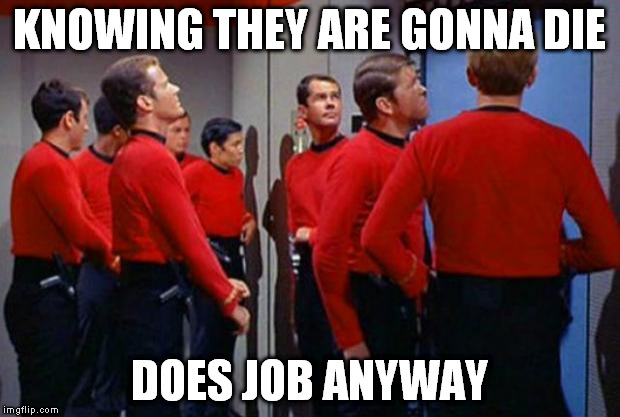Star Trek Investing: Avoiding the Red Shirt Ensigns (High-Fee Mutual Funds) in Your Portfolio
“To boldly go where no man has gone before.”

It’s the 50th anniversary of Star Trek – can you believe it? No one could have predicted Gene Roddenberry’s brainchild, the original Star Trek, which was cancelled after only three seasons, would become a billion dollar franchise. Since then Star Trek has produced numerous TV shows (the latest of which is being filmed in Toronto), movies and even a Klingon dictionary. Star Trek has a loyal following – there are millions of Star Trek fans (or Trekkies, as they prefer to be called) around the world.
Now I know what you’re thinking – what do Star Trek and investing possibly have in common? More than you think. In Star Trek, low ranked ensign officers where red shirts. There’s a running gag that the red shirt ensigns are usually the first to die in a dangerous situation by latest enemy, whether it’s the Klingon or Romulans. Relating this back to investing, while red shirt ensigns may be funny in the Star Trek universe, what isn’t funny is red shirt ensigns (or what I like to call high-fee mutual funds) weighing down your investment portfolio.
CRM2: Where No Man Has Gone Before
The introduction of CRM2 has really helped open the eyes of investors on the high mutual funds fees they’re paying. A management expense ratio (MER) of 2.5 percent may not seem like a lot on a $100,000 portfolio, but when it’s expressed in actual dollar figures – $2,500 – it can come as quite a surprise. The higher your mutual fund’s MER, the tougher it is for it to match the benchmark, let alone outperform it.
MERs aren’t the only thing weighing down your investment portfolio. Your financial advisor is compensated in other ways. One of those ways is loads. A load is a one-time fee you pay when buying or selling mutual funds; it typically ranges from 4 to 8 percent (although sometimes it’s a flat fee). As the names suggest, a front-end load is a fee you pay when you buy a mutual fund, while a back-end load is a fee you pay when you sell.
Surviving the Next Klingon Invasion
Similar to the expendable red shirt ensign in Star Trek, loads mean you’re likelihood of survival (or outperforming the benchmark) is that much less since you’re already starting from behind. With a front-end load, money it taken off before you even invest in the mutual fund. That means you need to make back the load – 4 to 8 percent – before you can break even. With back-end loads, you pay a fee when you sell. The longer you hold onto the mutual fund, typically the lower the fee. This only encourages you to hold onto underperforming mutual funds (red shirt ensigns) in your investment portfolio.
While most mutual funds don’t have loads, many still do. You may have one in your investment portfolio without even knowing it. There are a plethora of mutual funds in the Canadian market: of the 6,200 mutual funds, 4,000 are no-load – that means 2,200 still charge a load.
How do you avoid paying a load? The easiest way is by buying ETFs. Unlike mutual funds, ETFs don’t come with loads. By replacing high-fee mutual funds with ultra-low fee ETFs like those offered by Smart Money Invest, you’ll better your chances of survival during the next market downturn – or Klingon invasion.
There are no published comments.
New comment